ENEMIES OF ROME 6.1 - ARMINIUS - Magna Germania
To understand who is Arminius and how he has such a special place among the enemies of Rome, we must consider his people and their relations with the Romans.
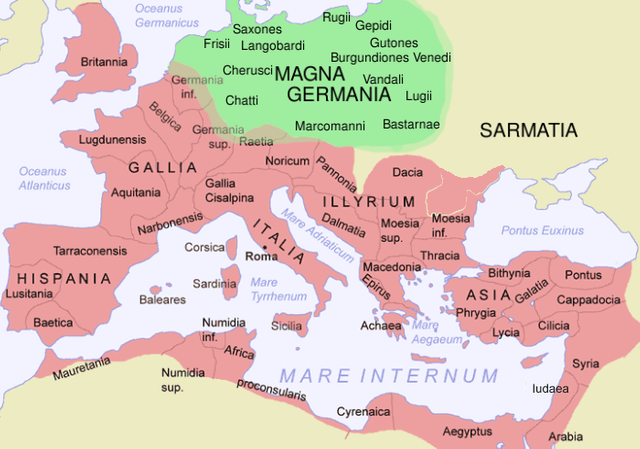
Magna Germania at the time of the greatest expanse of the Roman Empire. Everything north of the Danube and East of the Rhine is terra incognita for the Romans. [Source]
The German Question
Take a good look at Europe and what do you see, a melting pot and cultures dating back milleniums, right? Now, look again, but this time divide the map of Europe by looking at the roots of the languages. What do you see? A clear distinction between the Latin-speaking Southern Europe and the Germanic-speaking Northern Europe. And now throw on top of that a geographical map and you’ll notice how the divide between those two “worlds” follow more or less a line starting in the North Sea and reaching south towards the Alps, then going East as far as the Black Sea.
So the question is this: why the all-conquering Romans, who steamrolled through centuries south, north, west and east, in every possible direction, imposing their language and customers upon conquered people never really made their mark upon this area called rather late Germany? And by Germany, of course, I don’t mean the current political entity called Germany which is just a fragment of the expanse the Romans encountered beyond the Rhine where lived hundreds of tribes which - much like the Gauls - constantly quarreled between themselves and could only coalesce into a single force when their commonwealth was threatened by an alien force - or when the prospect of loot and glory was strong enough to entice them to join together for an expeditionary raid.
One of the answer to this question is Arminius.
First encounters
The Germans appear in the Roman history quite late which is quite understandable. For centuries, Rome was only a single city quarreling with the neighbouring cities around it. First there were the Latins, and next came the Gauls. The Gauls epitomized everything the Romans dreaded: they were the great “other”, capable of besieging Rome, and coming close to conquering it by themselves under Brennus (390 BC), or by allying themselves to the Carthaginians during the Punic Wars.
It’s only once Rome had its hands free to conquer the northern part of Italy which was still called Cisalpine Gaul, and then link up the Italian Peninsula to the Spanish peninsula by annexing the fringe of Southern Gaul in the last century BC that the Romans came into contact with the Germans, in the shape of two Germanic tribes the Cimbri and the Teutons.
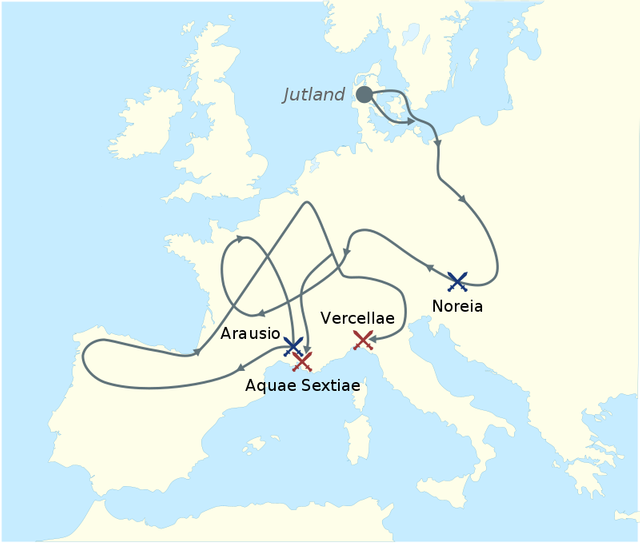
Map of the migration of the Cimbri and Teutons between 110BC and 101BC [Source]
Cimbri and Teutons are two tribes harking back from the Baltic Sea who passed into Gaul around 106 BC, raiding and plundering at will, and who headed south and inflicted the biggest defeat on record for Roman armies at the battle of Arausio (105 BC). At this point, they could have followed up with an invasion of Italy, but their leaders curiously turned West - throwing the chance of annihilating the Romans once and for all, and leaving them time to regroup, and, under Marius, to crush them at the battles of Aquae Sextiae (102 BC) and Vercellae (101 BC).
On the grand scheme of things, the Cimbres and the Teutons did not cause much damage but there is a writing on the wall there: centuries later, their descendants from the same region would spill into unprotected Gaul and Spain to wreck havoc on the Western Empire for good.
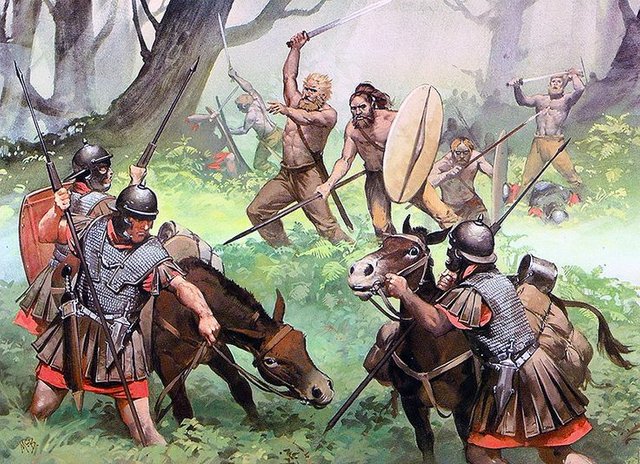
Roman soldiers ambushed by German warriors. [Source]
No more Germanic raid would trouble the Romans for good, who didn’t pay much thought about the people beyond the Rhine… until Arminius.
A common frontier
As often, when it comes to Rome, you can put the blame (or the glory) on Julius Caesar himself. In 58 BC, Caesar - as a proconsul for Transalpine Gaul - took advantage of the migration of an Helvet tribe into Gaul to start the conquest of the whole country. It took him years of bloodshed and negotiations, but he eventually managed to submit the whole country and all its tribes and brough for the first time the borders of Rome in close contact with the land of the German tribes.
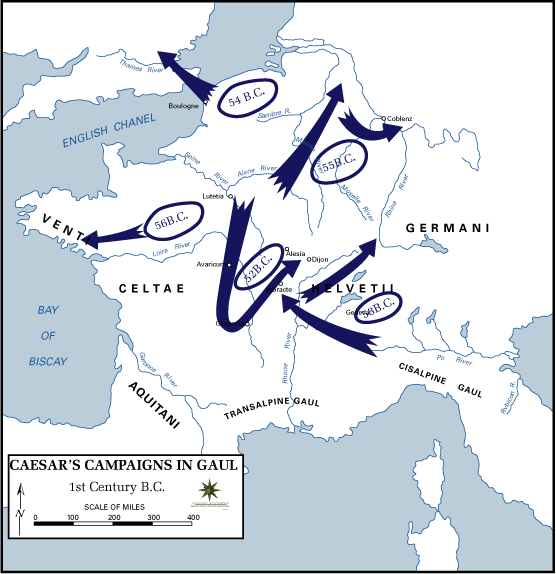
[Source]
He even set upon himself to demonstrate to the new neighbours that the new kid on the block was not kidding around by making a demonstration of force, building a bridge above the Rhine in record time, and making a show of force deep into Germany before to retreat back beyond the Rhine. The object of this action was purely to take revenge on a tribe which had provided help to the Gauls and dissuade any other to do such a thing in the future.
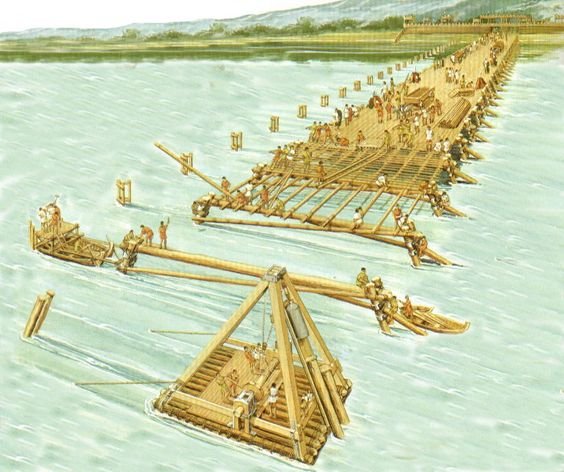
The Roman building techniques were instrumental in their ability to conquer new lands and master rivers like the Rhine. [Source]However, once Caesar’s heir - Octavian - had successfully won Rome for himself and became Augustus, he quickly came to the conclusion that the best way to defend Gaul against the Germans was to do what Rome was best at: expand and subjugate them.
But it was without knowing that one man, one single man, would stop the steamrolling Roman army in its track and definitely seal the Roman frontier on the Rhine for eternity.
And his name was Arminius.
TO BE CONTINUED... Sources:
http://sourcebooks.fordham.edu/halsall/basis/tacitus-germanygord.asp
https://en.wikipedia.org/wiki/Cimbri
http://www.historyfiles.co.uk/KingListsEurope/BarbarianTeutones.htm
https://en.wikipedia.org/wiki/Germanic-Roman_contacts
Cimbri in English, as you used before; Cimbres is French.
True! Thanks for spotting that!